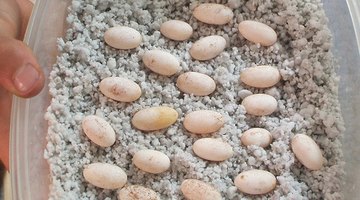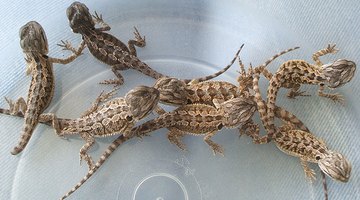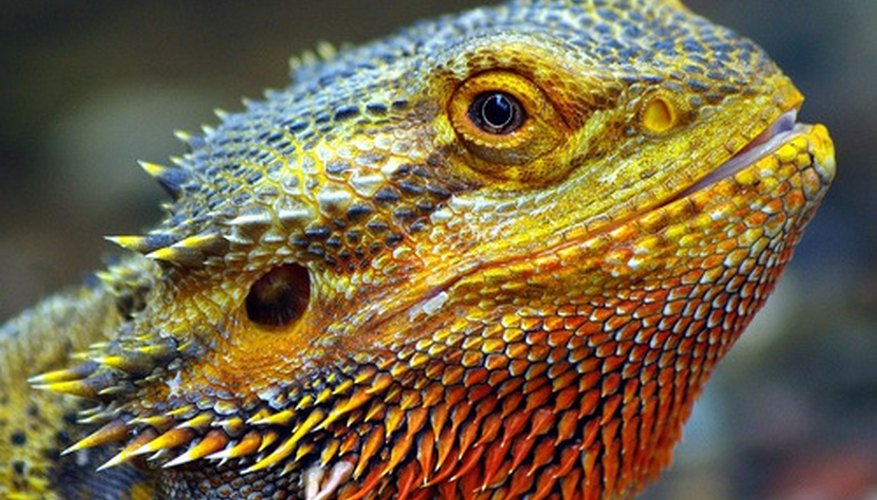Bearded dragons or beardies as they are sometimes called are a kind of lizard that has gained popularity as small exotic pets. Some experienced bearded dragon owners like to breed their dragons so that the females lay eggs that will produce healthy babies that can be sold. The eggs must be handled with care and brought to the hatching stage at specific temperatures and in a certain way to make sure they will hatch properly. By following these specifics a less experienced beaded dragon owner can successfully welcome a new generation of beardie babies.
- Bearded dragons or beardies as they are sometimes called are a kind of lizard that has gained popularity as small exotic pets.
- By following these specifics a less experienced beaded dragon owner can successfully welcome a new generation of beardie babies.

Watch the female bearded dragon so you will know when she lays her clutch. A clutch is a term for a group of bearded dragon eggs. The female will burrow into bedding or sand to lay the eggs. A bearded dragon will lay up to 50 eggs and usually no fewer than ten.

Remove the eggs from the tank very carefully. Do not turn them from their original position or upside down. Place them inside a plastic container that contains vermiculite that has been mixed with water. The ratio is four parts water and one part Vermiculite. Vermiculite is a mix of minerals that expand when heated. You can find it at pet stores or stores that sell reptiles as pets. The eggs need to be placed gently two thirds deep into the vermiculite water mixture. Be sure to punch air holes in the top of the container before putting the eggs inside.
- Remove the eggs from the tank very carefully.
- The eggs need to be placed gently two thirds deep into the vermiculite water mixture.

Move the container with the eggs into the styrofoam incubator that has a temperature of 28.9 degrees C. Place the incubator in a slightly cooler room than the temperature in the incubator. This is important so that the incubator temperature will stay steady. A warmer room can raise the temperature and destroy the eggs. Use a thermometer to monitor the heat level regularly during incubation.
- Move the container with the eggs into the styrofoam incubator that has a temperature of 28.9 degrees C. Place the incubator in a slightly cooler room than the temperature in the incubator.
- This is important so that the incubator temperature will stay steady.

Wait for the eggs to hatch. This happens in approximately two months. About one day before they actually hatch, the eggs will start to collapse in upon themselves.

Leave the baby bearded dragons in the incubator for 24 to 36 hours after hatching. They can then be moved into an aquarium home. The new babies will need to eat about three days after birth.
TIP
Small crickets are a good first meal for baby bearded dragons.
WARNING
New baby bearded dragons stay attached to the yolk sack of the egg. Do not forcibly remove it as it can cause a rupture to your baby bearded and he could bleed to death. Allow it to drop off of its own within 24 to 36 hours.
